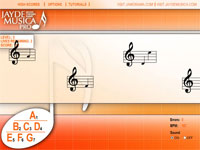Play Piano Like a Pro: Even If You've Never Taken a Lesson in Your Life!
>> Dont Even Think Of Trying Other Prodicts untill You Read This <<
The first thing most students think they have to learn when taking piano lessons is note reading. But not only is note reading unnecessary...it's a hindrance when you really want to play piano like a pro. Why? Because pros use chords. And chords are much, much easier to learn than reading sheet music.
While chords will help you play like a pro fast, it all depends on the kind of chords you play. For example, most fledgling piano students think they will begin by playing triads. And for most piano teachers, this is the chord structure taught at the beginning. While there is nothing at all wrong with triads (all western music is built on this) it just won't give you a modern sound.
A chord structure I have my beginning students learn first, the open position piano chord, uses both hands right away to create a modern sound!
The benefit of using both hands right away is that you can vary the tones between hands to create a rich, beautiful sound that can NEVER be accomplished with the simple triad. Why piano teachers have their students learn triads first, I'll never know. But when you learn this chord position first, it allows you to create a open vented sound that is perfect for today's contemporary styles. Jazz, New Age, etc.. These styles can be created easily using the open position piano chord.
The way to play these chords is relatively easy. It may take a few minutes for your hands to get used to because this chord structure really stretches your hands. Here's how it works. The left hand gets the root note, the fifth, and the seventh. The right hand gets to play the third, seventh, and third again. So, if we were to play a C Major 7 chord, it would be spelled like this: LH - c, g, b RH - e, b, e. This looks a lot more complicated than it actually is and when you see it laid out for you on a keyboard diagram, you'll immediately see how easy it actually is to play!
To play the piano like a pro, don't start with triads; try the open position piano chord. You won't be sorry!
Edward Weiss is a pianist/composer and webmaster of Quiescence Music's online piano lessons. He has been helping students learn how to play piano in the New Age style for over 14 years and works with students in private, in groups, and now over the internet. Stop by now at http://www.quiescencemusic.com/piano_lessons.html for a FREE piano lesson!
Labels: baby_grand_laugh_learn_piano, free_interactive_learn_lesson_piano_play, frog_leap_learn_piano_see, learn_piano_book, learn_to_play_piano, learn_to_play_piano_free

